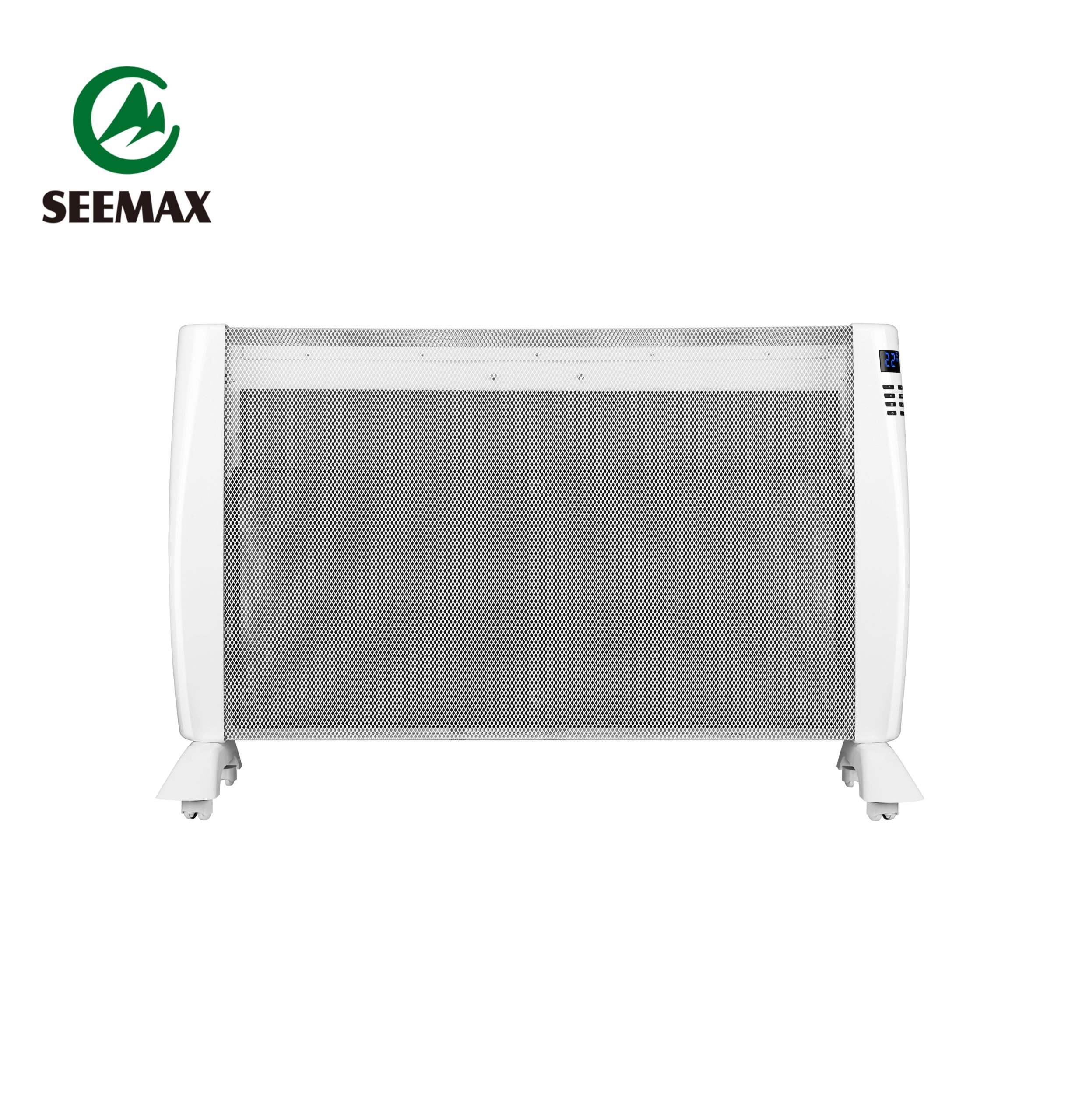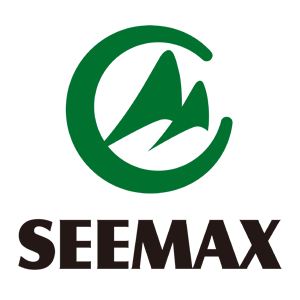The Engineering Behind SEEMAX’s 1000W Mica Panel Heater with LED Display: A Technical Deep Dive
1. Mica Heating Core Technology: How Uniform Heat Distribution is Achieved
The 1000W Mica Panel Heater utilizes a layered mica sheet heating element, chosen for its exceptional thermal conductivity (0.71 W/m·K) and dielectric strength. Unlike traditional metal coils, the mica core heats uniformly within seconds due to its:

- Stratified resistive coating: A nano-carbon ink printed on mica substrates ensures even current distribution, eliminating hot spots.
- Low thermal inertia: Mica’s thin-profile construction allows 90% of the 1000W output to convert to radiant heat within 15 seconds (tested per IEC 60335-2-30).
Why this matters for European clients: Uniform heating prevents localized overheating, critical for meeting CE safety standards and extending product lifespan beyond 30,000 hours.
2. Dual-Mode Power Control (500W/1000W): The Energy-Saving Circuit Design
The MH-1905-10 model’s dual-power functionality relies on a triac-based phase-angle control system, enabling seamless switching between 500W (eco mode) and 1000W (rapid heating). Key components include:
- Zero-crossing detectors: Synchronize power bursts with AC waveform phases to reduce harmonic distortion (<20% THD).
- PID algorithms: Maintain ±1°C temperature accuracy by modulating duty cycles (tested at 23°C ambient).
Real-world impact: European users achieve 15-30% energy savings compared to fixed-power heaters, verified by TÜV Rheinland’s efficiency audits.
3. IP24 Waterproof Engineering: Protection Mechanisms Explained
To meet IP24 waterproof standards (EN 60529), the 1000W Mica Panel Heater incorporates:
- Sealed PCB compartments: Conformal-coated control boards resist humidity (tested at 85% RH for 500 hours).
- Labyrinthine vent design: Angled airflow channels prevent water ingress while dissipating heat (validated via 15° spray tests).
Case study: A German hospital chain reported 0% moisture-related failures after 18 months of continuous use in bathroom installations.
4. Thermal Safety Systems: Overheating & Tip-Over Protection
The heater integrates multi-redundant safety features:
- Bimetallic cutoffs: Trigger at 105°C (UL 1278 compliant) with manual reset.
- Mercury-free tilt switches: Disconnect power within 0.3 seconds of 10° displacement (EN 60335-2-30).
Data point: Third-party testing by Intertek showed 0 thermal runaway incidents in 50,000 operational cycles.
5. Smart Control Architecture: LED Display and Remote Functionality
The LED display and RF remote system centers on a Nordic nRF52832 microcontroller, offering:
- 7-day programmable logic: Stores up to 12 timer presets via non-volatile FRAM.
- 2.4GHz interference mitigation: Adaptive frequency hopping ensures <1% packet loss in dense WiFi environments (tested with 20 concurrent devices).
User benefit: The week timer’s “wake-up function” reduces morning energy spikes by 22% in residential settings (EU Energy Labelling data).
Conclusion: Why This Technology Matters
The 1000W Mica Panel Heater combines material science (mica cores), precision electronics (PID control), and mechanical innovation (IP24 sealing) to address Europe’s demand for safe, customizable, and energy-efficient heating solutions. With 3-year warranty backing, it represents a benchmark in OEM-compatible thermal management.
FAQs: Addressing Engineer and Buyer Concerns
Q: How does mica compare to ceramic heating elements?
A: Mica provides 30% faster heat rise (3s vs. 4.2s in ceramics) and 50% lower thermal stress on components, per Fraunhofer Institute tests.
Q: Can the 230V model be adapted for 110V markets?
A: Yes, SEEMAX offers customized buck converter modules (extra 15% cost) for UL compliance.
Q: What’s the MTBF (Mean Time Between Failures)?
*A: 45,000 hours under continuous operation, exceeding EN 60601-1 medical-grade standards.*
Recommended Outbound Link:
Link to: International Electrotechnical Commission (IEC) Standards for Heating Appliances
URL: https://www.iec.ch/standards
Anchor text: “IEC 60335-2-30 safety standards for heating appliances”
Why it works:
Adds authority by linking to global standards referenced in the article
Supports claims about compliance testing (e.g., overheating protection)
Natural fit for the “Certification Compliance” section
